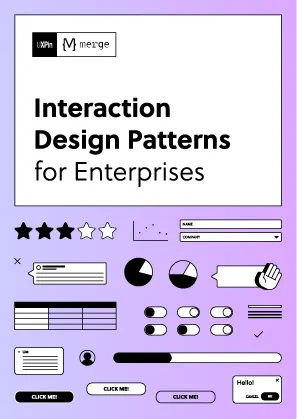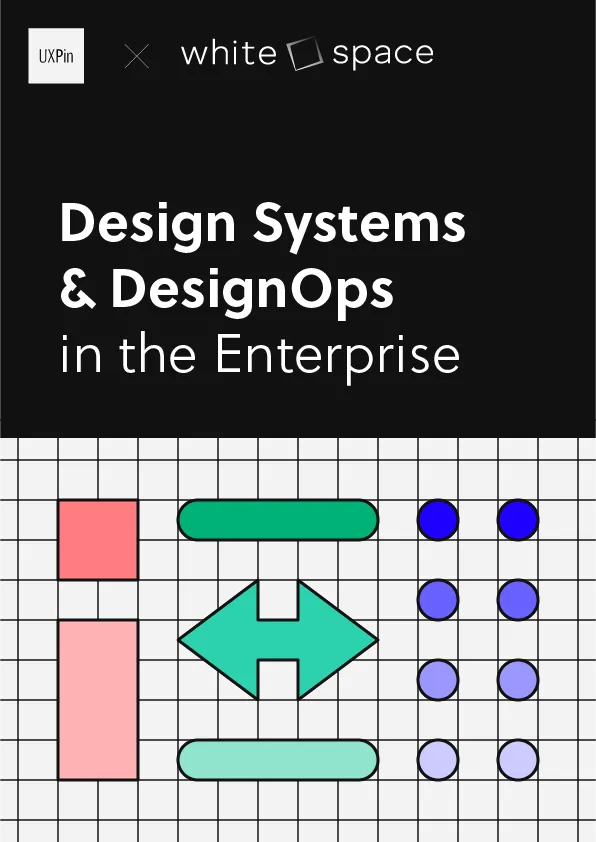Design teams often struggle with slow feedback cycles, scattered communication, and inefficient handoffs. Collaboration tools can fix these issues, saving time and improving productivity. For example, T. Rowe Price cut feedback times from days to hours and reduced engineering time by 50%.
Here’s how to get started:
- Identify workflow problems: Look for bottlenecks like scattered feedback, manual tasks, or version control chaos.
- Choose the right tools: Prioritize features like real-time collaboration, version control, and design system integration.
- Plan implementation: Roll out tools in phases, train your team, and set clear usage guidelines.
- Centralize feedback: Keep all comments and reviews in one place for faster approvals.
- Track performance: Measure success with metrics like project timelines, feedback speed, and team productivity.
5 workflows to make your design team hyper efficient
Identify Current Workflow Problems
Before bringing in new collaboration tools, take a close look at where your workflow is falling short.
Common Workflow Bottlenecks
The design team at T. Rowe Price faced challenges like drawn-out feedback cycles, messy email chains, and time-consuming manual redlining tasks.
Some typical bottlenecks include:
- Scattered Communication: Feedback and updates spread across emails, chats, and comments on different platforms.
- Manual Processes: Tasks like redlining and version tracking that eat up time and energy.
- Handoff Issues: Miscommunication or inconsistencies between design and development teams.
- Version Control Chaos: Multiple file versions with no single, reliable source.
To tackle these issues, start by identifying clear areas for improvement.
As Lead UX Designer Larry Sawyer shared:
"When I used UXPin Merge, our engineering time was reduced by around 50%. Imagine how much money that saves across an enterprise-level organization with dozens of designers and hundreds of engineers."
Define Team Goals
Once you’ve pinpointed the bottlenecks, set clear, measurable goals to address them. Design Leader David Snodgrass highlighted the impact of a focused approach:
"The deeper interactions, the removal of artboard clutter creates a better focus on interaction rather than single screen visual interaction, a real and true UX platform that also eliminates so many handoff headaches."
Here’s an example of how you can outline goals:
| Goal Area | Current State | Target Improvement |
|---|---|---|
| Feedback Cycles | 2–3 days | Same-day response |
| Design Handoff | 4 hours per feature | Under 2 hours per feature |
| Version Control | Multiple file locations | Single source of truth |
| Team Communication | 5+ platforms | Unified communication tool |
Select Team Collaboration Tools
Pick tools that directly improve your design workflow. The right platform can save time and enhance communication within your team.
Must-Have Tool Features
Look for tools with features that solve your team’s specific challenges. Benjamin Michel, UX Designer at Bottomline Technologies, highlights the value of certain functionalities:
"I think UXPin is an underrated powerhouse of design and prototyping that allows complex applications to design low, medium, and high-fidelity designs to communicate complex interactions all in one place quickly and effectively."
Here are some key features to consider:
| Feature Category | Key Capabilities | Impact on Workflow |
|---|---|---|
| Live Collaboration | Real-time editing and commenting | Speeds up feedback and decision-making |
| Version Control | History tracking and single source of truth | Reduces confusion over file versions |
| Design Systems | Component libraries and reusable assets | Ensures consistency across projects |
| Handoff Tools | Code export and spec generation | Simplifies the developer handoff process |
| Advanced Interactions | States, variables, and conditions | Makes prototypes more realistic |
Once you’ve evaluated these features, check how well the tools integrate with your existing systems.
Check Integration Options
Brian Demchak, Sr. UX Designer at AAA Digital & Creative Services, shares his team’s experience:
"As a full stack design team, UXPin Merge is our primary tool when designing user experiences. We have fully integrated our custom-built React Design System and can design with our coded components. It has increased our productivity, quality, and consistency, streamlining our testing of layouts and the developer handoff process."
Make sure the tool:
- Works with your design systems and component libraries
- Simplifies the design-to-code workflow
- Syncs with communication and project management platforms
- Is compatible with your version control systems
These integrations can greatly improve efficiency and make the transition from design to development much smoother.
sbb-itb-f6354c6
Add Tools to Your Workflow
Once you’ve chosen the right tools, the next step is to integrate them effectively. This requires careful planning and team training to ensure smooth adoption without disrupting ongoing work.
Plan Tool Implementation
Rolling out tools in phases helps reduce disruptions and streamlines the transition. Data shows this method can cut feedback times from days to just hours while automating repetitive tasks.
| Phase | Duration | Actions |
|---|---|---|
| Pilot Testing | 2-3 weeks | Test with a small team, map workflows, gather feedback |
| Team Onboarding | 1-2 weeks | Train departments, set up workspaces |
| Full Integration | 4-6 weeks | Transition workflows, document new processes |
Train Team Members
Training is key to making sure your team gets the most out of the tools and works more efficiently. Research shows that well-trained teams can cut engineering time by up to 50%.
Here’s how to structure training:
1. Initial Setup Sessions
- Conduct hands-on workshops using real project scenarios.
- Schedule sessions across time zones to include all team members.
2. Documentation and Resources
- Provide quick-reference guides.
- Share video tutorials and best practices.
3. Mentorship Program
- Pair experienced users with newcomers for support.
- Offer ongoing help during the transition.
Once training is complete, the next step is to set clear guidelines for how the tools should be used.
Set Tool Usage Rules
Consistent guidelines help keep projects organized and workflows efficient. Focus on these areas:
- Project Organization: Use standard naming conventions and a unified file structure for assets and components.
- Workflow Protocols: Standardize feedback processes, version control, and design handoffs.
- System Integration: Set rules for using design systems and managing components.
Regularly review and update these rules to ensure they stay relevant and effective as your team’s needs evolve.
Improve Team Communication
Clear communication is essential for design teams. Modern collaboration tools help bring feedback together and make interactions more efficient.
Keep Feedback in One Place
When feedback is centralized, it reduces scattered conversations and keeps everyone on the same page. Mark Figueiredo, Sr. UX Team Lead at T.RowePrice, put it this way:
"What used to take days to gather feedback now takes hours. Add in the time we’ve saved from not emailing back-and-forth and manually redlining, and we’ve probably shaved months off timelines."
Use features like threaded review comments, link feedback directly to design components, and create dedicated spaces for reviews. This not only keeps things organized but also helps speed up approvals.
Accelerate Design Approvals
Simplifying the approval process can significantly cut down project timelines. Integrated collaboration tools make it easier to test designs and hand them off to developers. Here’s how you can make approvals faster:
- Set clear review cycles with assigned responsibilities.
- Use automated notifications to ensure timely feedback.
- Keep a version-controlled record of design changes and decisions.
These steps make approvals smoother and keep projects moving forward.
Track Tool Performance
Monitor how your collaboration tools are performing by using clear metrics and gathering team feedback. This ensures workflows stay efficient and helps justify your investments. By building on smooth implementations and open communication, tracking performance highlights areas of improvement and success.
Measure Success Metrics
Use these metrics to evaluate how well your team is working:
- Project timelines: Compare how long projects take before and after introducing the tool.
- Feedback resolution speed: Track how quickly design feedback is addressed.
- Engineering handoff efficiency: Measure the time from design approval to development.
- Team productivity: Look at the number of completed design tasks per sprint.
These numbers provide a clear picture of productivity and smoother handoffs. For example, reduced engineering time can be a direct result of effective tool use. Combine these metrics with team feedback for a full understanding of performance.
Collect Team Input
Structured feedback from your team helps you identify what’s working and what needs adjustment. Focus on these areas:
- Tool adoption rates
- How often features are used
- Workflow bottlenecks
- How well the tool integrates with existing systems
- Training gaps or areas where guidance is needed
Hold monthly team check-ins to assess tool performance and gather suggestions. A simple feedback form can also be helpful. Include practical questions like:
- Which features do they use the most?
- Where do they experience workflow issues?
- What additional features would improve their work?
- How have the tools made daily tasks easier?
This input allows you to fine-tune workflows and get the most out of your collaboration tools.
Conclusion
Using collaboration tools can significantly improve design workflows. For instance, T. Rowe Price saw feedback cycles shrink from days to hours, while cutting out manual redlining saved months on project timelines.
These tools deliver measurable results when implemented effectively. Here’s a simple approach to follow:
- Identify workflow bottlenecks
- Select tools that work seamlessly with current systems
- Provide proper training and clear usage instructions
- Centralize feedback management
- Regularly track performance metrics
When integrated correctly, these tools break down communication barriers, speed up approvals, and make the design process more efficient. Teams can focus less on workflow issues and more on producing quality designs. By keeping track of metrics and gathering ongoing feedback, organizations can continue refining their tools and processes for even better outcomes.

